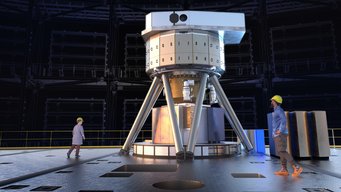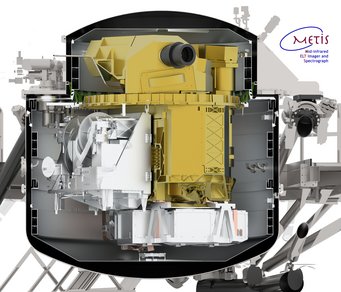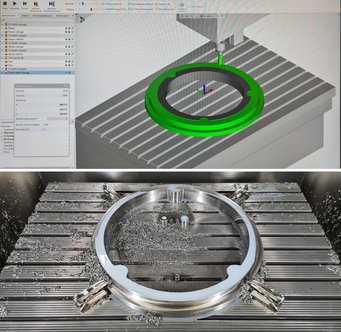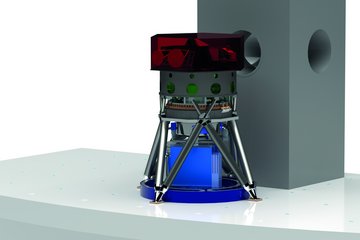Manufacturing of MICADO and METIS for the ELT has begun
MICADO and METIS are two of the four first-generation instruments for ESO’s Extremely Large Telescope (ELT) that will go to the telescope later this decade. MPIA is a consortium partner in both projects and just started to manufacture various sub-systems of the instruments. A mini-documentary about both instruments was screened during a live event on ESO’s YouTube channel on Friday, 12th May.
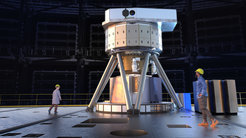
“It’s really exciting to see the first pieces arriving in the labs and workshops of our partners all over Europe”, says Eckhard Sturm, the MICADO Project Manager and a scientist at the Max Planck Institute for Extraterrestrial Physics (MPE). To celebrate that vital project milestone, ESO (European Southern Observatory) – together with the MICADO and METIS consortia – produced the first two of a collection of explainer videos. They were, screened during a during a live event on Friday, 12th May. , where our scientists Nadine Neumayer and Silvia Scheithauer answered questions about the two projects.
MICADO is the Multi-AO Imaging Camera for Deep Observations. It will equip the 40-metre-class Extremely Large Telescope (ELT) with a first-light capability for diffraction-limited imaging and long-slit spectroscopy at near-infrared wavelengths. It is being designed and built under the leadership of MPE by a consortium of partners in Germany, France, the Netherlands, Austria, Italy, and Finland, together with ESO.
METIS, the Mid-infrared ELT Imager and Spectrograph is another first-light instrument for the ELT. It will complement its observing capabilities in the infrared by covering the mid-infrared range. METIS offers diffraction-limited imaging, low and medium-resolution slit spectroscopy and coronagraphy for high-contrast imaging at wavelengths between 3 and 13 microns and high-resolution integral field spectroscopy between 3 and 5 microns. It is built by a European consortium under the lead of the PI institute NOVA (Netherlands Research School for Astronomy) in the Netherlands with twelve partners from Germany, the UK, France, Switzerland, Belgium, Portugal, Austria, Taiwan and the USA.
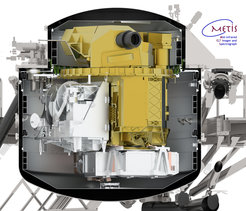
The Max Planck Institute for Astronomy (MPIA) in Heidelberg, Germany, plays key roles in the design and manufacturing of both instruments. MICADO co-investigator and Instrument Scientist Jörg-Uwe Pott leads the MICADO team at MPIA. Ralph Hofferbert, the local Project Manager, and Friedrich Müller, the Systems Engineer, complement it.
MPIA supplies MICADO’s warm pre-optics, which guide starlight from the telescope into the cold camera optics with minimal loss of sensitivity and image sharpness. In addition, MPIA provides the calibration unit for all standard scientific observation modes.
The high-tech features of MICADO and METIS will enable them to go far beyond the capabilities of the best observatories today, including the Hubble and James Webb Space Telescopes. For example, MICADO’s sensitivity will be comparable to the JWST but with six times the resolution. This way, MICADO will explore exoplanets, unveil the detailed structure of distant galaxies, and study individual stars in nearby galaxies. MICADO will also be a unique and powerful tool for exploring environments where gravitational forces and general relativistic effects are extremely strong, such as close to the supermassive black hole at the centre of our galaxy, the Milky Way.
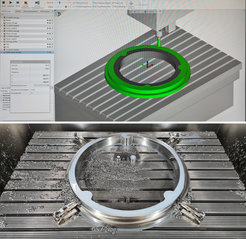
METIS will have a much higher resolution than JWST both spectrally and spatially, allowing us to peer into the details of star and planet formation and explore the extremely thin atmospheres of rocky exoplanets. As METIS will observe in the mid-infrared, it will also look at literally cool things such as clouds of gas and dust and the centres of galaxies – to boldly look where no one has looked before. Another exciting science case is that METIS will be able to test observationally whether our nearest stellar neighbours harbour rocky planets.
As the second largest METIS consortium partner, MPIA supplies the imaging camera and the Adaptive Optics (AO) subsystems. The AO corrects atmospheric distortions and is thus essential for diffraction-limited observations with METIS.
For METIS, the responsible scientist at MPIA is Markus Feldt, a METIS co-investigator. Further MPIA team members are the Project Manager Silvia Scheithauer, the Instrument Scientist Roy van Boekel, the Calibration Lead Wolfgang Brandner, and the Adaptive Optics (AO) Lead Thomas Bertram. “METIS is an enormously complex instrument with the highest requirements in terms of accuracy and performance. To be involved in realising such an instrument in cooperation with 12 European and worldwide partners is unique!” Markus Feldt says.
The ELT with MICADO and METIS is set to start operating later this decade.
MN
